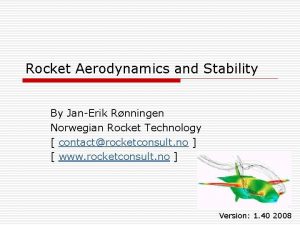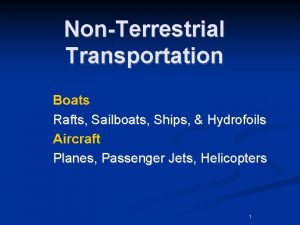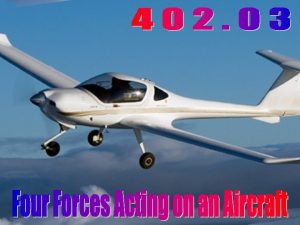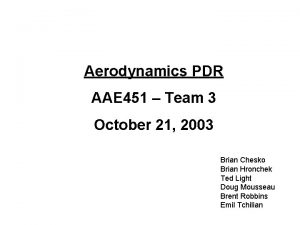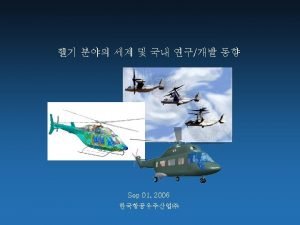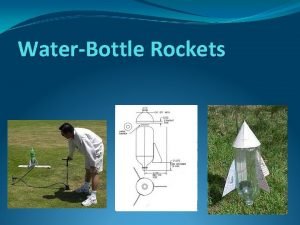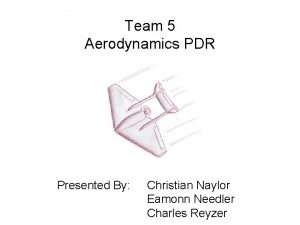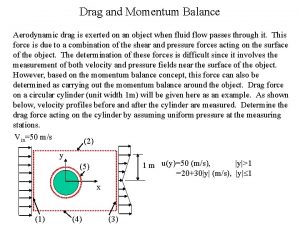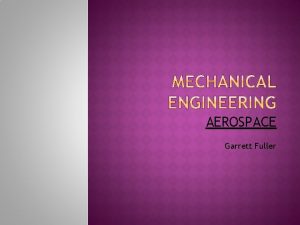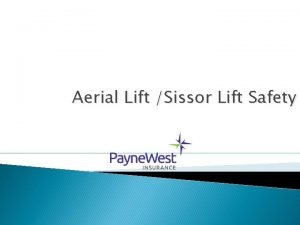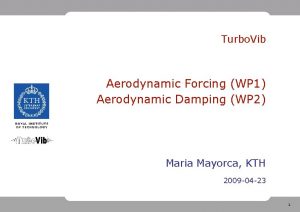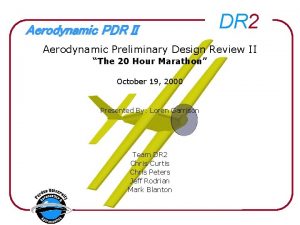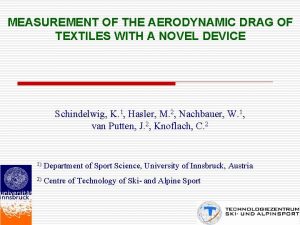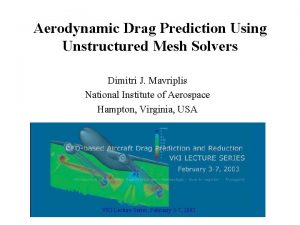Aerodynamic Forces Lift and Drag Aerospace Engineering 2011



















- Slides: 19

Aerodynamic Forces Lift and Drag Aerospace Engineering © 2011 Project Lead The Way, Inc.

Lift Equation Lift Coefficient of Lift, Cl – Combines several factors • Shape • Angle of attack Direction of Flight

Applying the Lift Equation The Cessna 172 from Activity 1. 2. 2 step #2 takes off successfully from Denver, CO during an average day in May (22 OC) with a standard pressure (101. 3 k. Pa). Assume that the take-off speed is 55 knots (102 kph). What is the minimum coefficient of lift needed at the point where the aircraft just lifts off the ground? The Cessna wing area is 18. 2 m 2 and weight is 2, 328 lb (1, 056 kg).

Applying the Lift Equation Convert mass into weight Convert velocity

Applying the Lift Equation Calculate Air Density

Applying the Lift Equation Calculate coefficient of lift assuming that lift equals weight

Drag Equation Coefficient of drag, Cd – Determined experimentally – Combines several factors • Shape • Angle of attack Drag Direction of Flight

Applying the Drag Equation The same Cessna 172 from Activity 1. 2. 2 step #2 takes off under the same conditions as described earlier in this presentation. How much drag is produced when the wing is configured such that the coefficient of drag is 0. 05?

Applying the Drag Equation Calculate drag

Boundary Layer • Fluid molecules stick to object’s surface • Creates boundary layer of slower moving fluid • Boundary layer is crucial to wing performance

Boundary Layer and Lift • Airflow over object is slower close to object surface • Air flow remains smooth until critical airflow velocity • Airflow close to object becomes turbulent

Reynolds Number, Re • Representative value to compare different fluid flow systems • Object moving through fluid disturbs molecules • Motion generates aerodynamic forces Airfoil 1 Comparable to Airfoil 2 when Re 1 = Re 2

Angle of Attack (AOA) Affects Lift increases with AOA up to stall angle Airflow Lift Direction of Flight Lift Stall Lift Direction of Flight Angle of Attack

Reynolds Number • Ratio of inertial (resistant to change) forces to viscous (sticky) forces • Dimensionless number or

Applying Reynolds Number A P-3 Orion is cruising at 820 kph (509 mph) at an altitude of 4, 023 m (13, 198 ft). Assume a fluid viscosity coefficient of 1. 65 x 10 -5 N(s)/m 3. What is the average Reynolds Number along a wing cross section measuring 1. 1 m (3. 6 ft) from leading edge to trailing edge? Need components to calculate Re

Applying Reynolds Number Calculate Air Temperature Calculate Air Pressure

Applying Reynolds Number Calculate Air Density

Applying Reynolds Number Convert Velocity

Applying Reynolds Number Calculate Re
 Missile aerodynamics
Missile aerodynamics Cd equation
Cd equation Lift drag thrust weight
Lift drag thrust weight Lift drag thrust weight
Lift drag thrust weight Lift weight thrust drag
Lift weight thrust drag The drag lift in manual handling
The drag lift in manual handling Drag coefficient at zero lift
Drag coefficient at zero lift Feathering hinge
Feathering hinge Fins for rockets
Fins for rockets Christian naylor
Christian naylor Least aerodynamic shape
Least aerodynamic shape Aerodynamic dragster
Aerodynamic dragster Aerofoil shapes
Aerofoil shapes Aerodynamic devices
Aerodynamic devices Pltw aerospace engineering
Pltw aerospace engineering Metu aerospace engineering
Metu aerospace engineering Aerospace engineering solutions
Aerospace engineering solutions Phystech international
Phystech international Nasa chemist salary
Nasa chemist salary Example of parallel force
Example of parallel force
